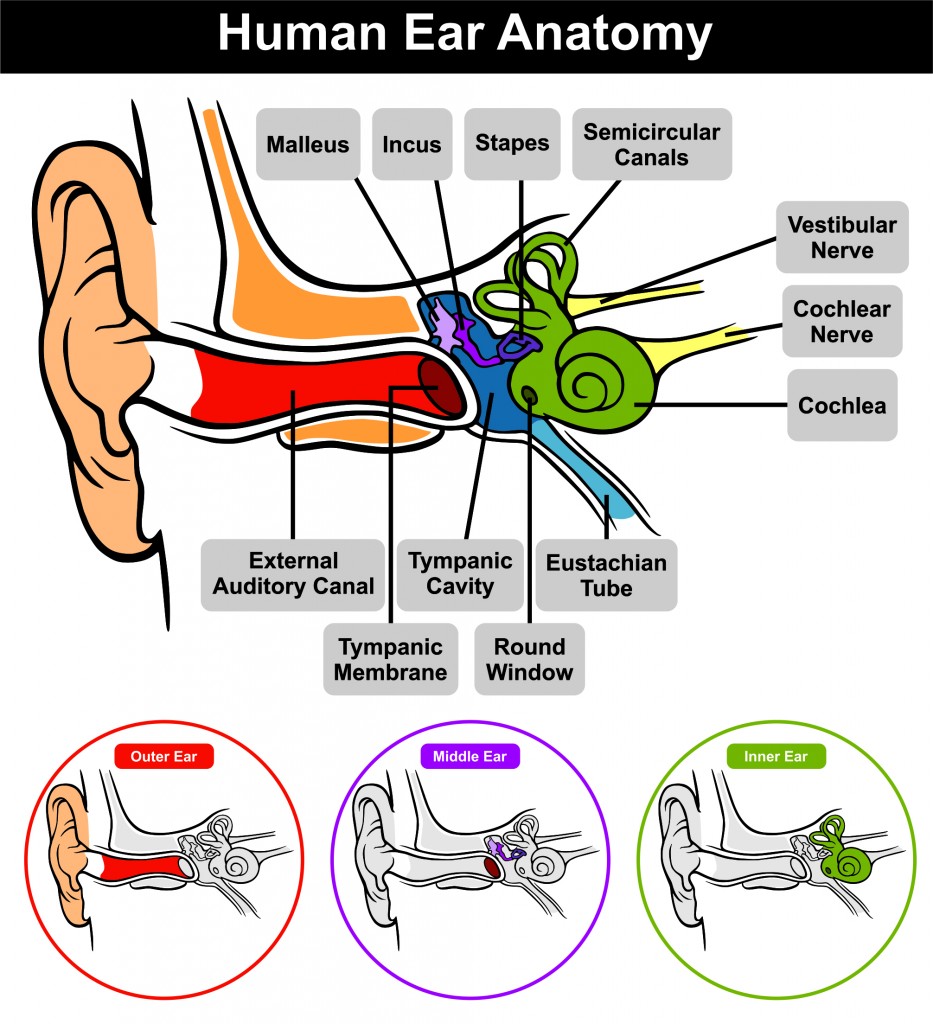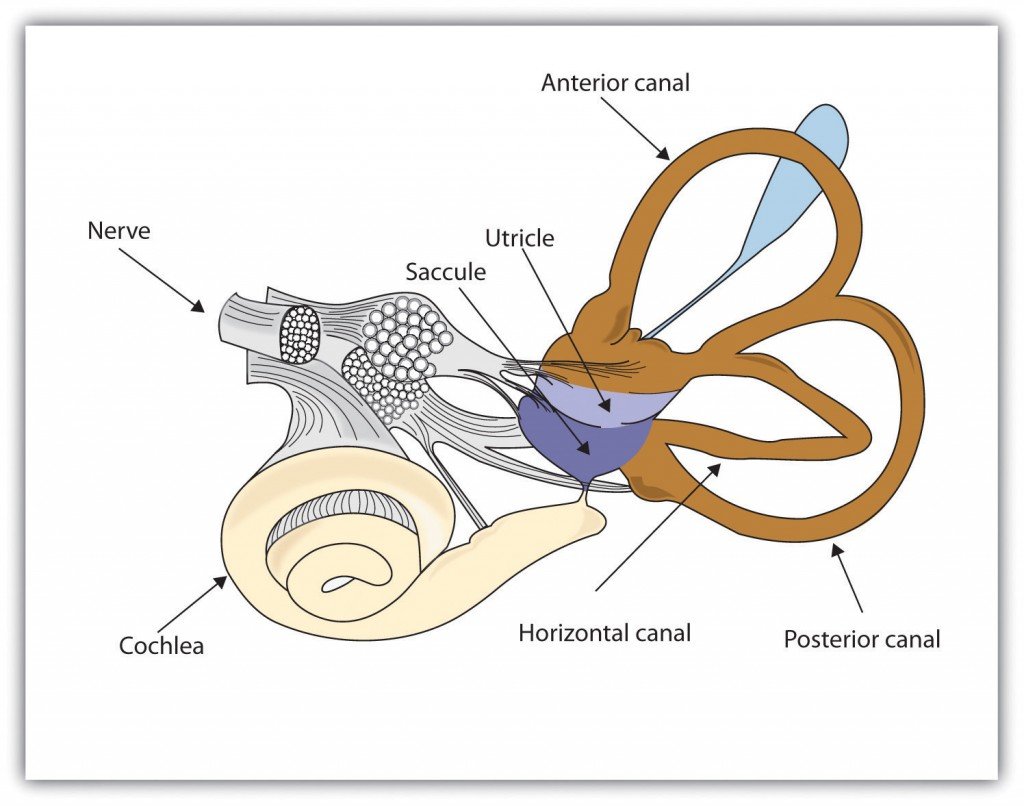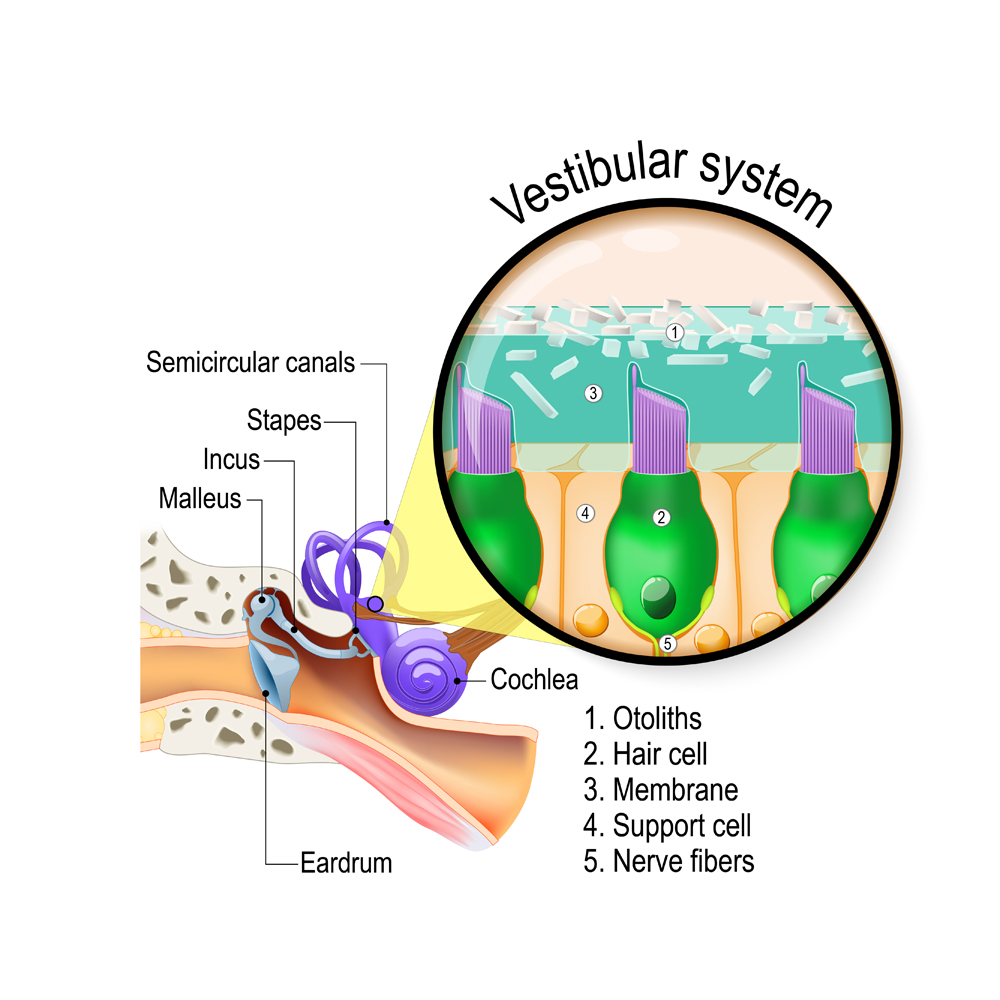Table of Contents (click to expand)
The ear maintains our sense of balance through two sets of structures: the utricle and saccule, and the semicircular canal. They help maintain static equilibrium and dynamic equilibrium, respectively.
Have you ever wondered why we can perform cartwheels and backflips? Or how we are able to close our eyes and continue dancing to the music without falling over? And how can our body remain in such bizarre yoga poses for minutes at a time?
Well, the real question underpinning all of that is… how does the body maintain our sense of position and balance while we are in motion or at rest?
The body’s balance system works through a constant process of position detection, feedback and adjustment using communication between the inner ear, eyes, muscles, joints and brain. However the most critical element is our inner ear, without which we would simply fall flat on our faces!
With that in mind, let’s take a look at the basic anatomy of the ear.
Anatomy Of The Ear
The ear is composed of three parts: the outer, middle and inner ear.
The outer ear consists of the pinna (the part you see and hang earrings on) and the ear canal. Moving inwards from the ear canal, we reach the middle ear, which is a tiny chamber that houses the tiniest bones of the body—the malleus, incus and stapes.
The outer and middle ear only play a role in hearing, but the third part, the inner ear, deals with both hearing and balance.
The inner ear consists of the cochlea and the vestibular apparatus. The cochlea is responsible for hearing, as it converts sound into nerve signals. The vestibular apparatus also maintains our sense of balance and equilibrium.
The inner ear has a tough bony shell called the bony labyrinth, inside of which lies the membranous labyrinth. The membranous labyrinth is the functional part of the vestibular apparatus, the organ we use to detect sensations of equilibrium. Both of these spaces are filled with fluid: the bony labyrinth contains a fluid called perilymph, while the membranous labyrinth contains endolymph.

Also Read: Basilar Membrane: What Is It? What Are Its Functions?
The Vestibular Apparatus
The vestibular apparatus has several parts—a set of three semicircular canals, as well as a utricle and a saccule.
Maintaining our static equilibrium is a job for the utricle and saccule. They contain endolymph, as well as special balance receptors that detect changes in our head position in relation to horizontal or vertical acceleration.
The semicircular canals are oriented at right angles to each other to detect rotational motion in all planes, thereby maintaining our dynamic equilibrium.

Maintaining Static Equilibrium
Static equilibrium refers to our sense of the direction in which gravity is pulling our body. It refers to the maintenance of the position of our head with respect to linear motion, such as while walking or going up and down a lift.
The utricle and saccule detect the orientation of the head with respect to gravity. A small sensory area called the macula is located on the inner surface of each utricle and saccule. It contains our balance receptors, called the hair cells. Each hair cell has multiple finger-like projections called stereocilia, or simply cilia.
The tips of these cilia are embedded in a gel, called the otolithic membrane, which has a layer of tiny ear stones called otoconia sitting on top of it, making the membrane heavier than the underlying endolymph. Thus, the weight of the otoconia bend the cilia in the direction of gravitational pull or linear acceleration.

The macula of the utricle lies in the horizontal plane, thus signaling orientation of the head when a person is upright. For example, it senses any changes in our head position when we feel pushed towards the back of a seat in a speeding race car.
The macula of the saccule is located in a vertical plane and signals head orientation when a person is lying down. For example, when we are inside an elevator going up, the otolithic membrane moves in the opposite direction—down.
Also Read: Why Focusing On Something Helps Maintain Balance?
Maintaining Dynamic Equilibrium
Dynamic equilibrium refers to the detection of angular acceleration, i.e., maintaining proper head position in response to rotational movement. For example, while turning your head sideways or shaking it up and down.
For humans, the semicircular canals detect different directions of movement when we rotate our head, and help maintain dynamic balance.
The semicircular canals are shaped like three letter U’s oriented in the three directions of space. Each forms a 90-degree angle with the other two. It’s like the corner of a box where the three sides meet!

Each semicircular canal has an enlargement on one end called the ampulla. The canal and ampulla are filled with a fluid called endolymph.
The ampulla contains a small crest called the crista ampullaris. A loose gelatinous tissue mass called the cupula lies on top of the crista ampullaris. The cupula contains hair cells that sense our position and spatial orientation.
When a person’s head begins to rotate in any direction, the inertia of the fluid in one or more of the semicircular canals causes the fluid to remain stationary, while the semicircular canals rotate with the head. This process causes the fluid to flow from the canal and ampulla, bending the cupula to one side. This sends signals to the brain about the change in rotation of the head and the rate of change in all three planes of space.
Thus, the semicircular canals maintain our sense of balance while walking, jogging and nodding, as well as when we do cartwheels, somersaults, pirouettes and warrior poses!
Putting It All Together…
The vestibular apparatus in the inner ear is responsible for maintaining our sense of balance and spatial orientation. The receptors, called the hair cells, are responsible for transforming movements into electrical impulses, which go to the brain via the vestibulocochlear nerve. The brain then coordinates with various structures, such as the eyes, muscles, joints and the cerebellum in order to maintain balance!
Most amazingly, all of this happens so quickly that we aren’t even aware that a huge and complex conversation is happening across your body to ensure you stay upright!
How well do you understand the article above!

